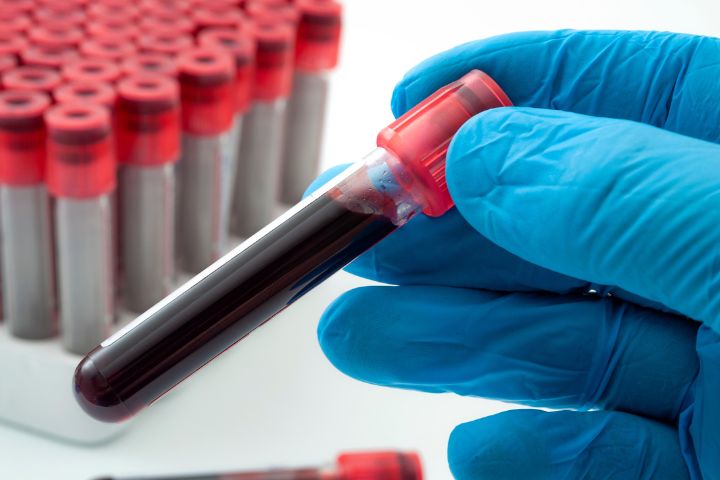Things about Northeast Medical Institute - New Haven Campus Phlebotomy Course & Cna Class
Things about Northeast Medical Institute - New Haven Campus Phlebotomy Course & Cna Class
Blog Article
Some Known Details About Northeast Medical Institute - New Haven Campus Phlebotomy Course & Cna Class
Table of ContentsNortheast Medical Institute - New Haven Campus Phlebotomy Course & Cna Class - An OverviewA Biased View of Northeast Medical Institute - New Haven Campus Phlebotomy Course & Cna ClassNortheast Medical Institute - New Haven Campus Phlebotomy Course & Cna Class - The FactsTop Guidelines Of Northeast Medical Institute - New Haven Campus Phlebotomy Course & Cna ClassEverything about Northeast Medical Institute - New Haven Campus Phlebotomy Course & Cna ClassAn Unbiased View of Northeast Medical Institute - New Haven Campus Phlebotomy Course & Cna Class
The use of such gadgets should be gone along with by various other infection prevention and control practices, and training in their use.For setups with reduced sources, cost is a driving variable in purchase of safety-engineered devices. Where safety-engineered gadgets are not available, knowledgeable usage of a needle and syringe is appropriate.
labelling); transport conditions; analysis of results for medical administration. In an outpatient division or facility, provide a dedicated phlebotomy workstation containing: a tidy surface with 2 chairs (one for the phlebotomist and the various other for the client); a hand laundry container with soap, running water and paper towels; alcohol hand rub. In the blood-sampling room for an outpatient division or facility, provide a comfortable reclining sofa with an arm remainder.
The 6-Minute Rule for Northeast Medical Institute - New Haven Campus Phlebotomy Course & Cna Class
Make sure that the indications for blood sampling are clearly defined, either in a written method or in documented instructions (e.g. in a lab form). Whatsoever times, comply with the approaches for infection prevention and control noted in Table 2.2. Infection avoidance and control techniques. Accumulate all the tools required for the treatment and place it within secure and easy reach on a tray or cart, guaranteeing that all the items are plainly visible.
Present on your own to the person, and ask the individual to mention their full name. Examine that the lab kind matches the patient's identification (i.e. match the person's information with the laboratory kind, to make sure precise recognition).
Make the person comfy in a supine position (if possible). Place a tidy paper or towel under the individual's arm. Review the test to be carried out (see Annex F) and obtain spoken consent. The person has a right to reject an examination any time before the blood sampling, so it is essential to guarantee that the patient has actually recognized the procedure.
The Ultimate Guide To Northeast Medical Institute - New Haven Campus Phlebotomy Course & Cna Class
Extend the person's arm and examine the antecubital fossa or lower arm. Locate a capillary of a good dimension that is noticeable, straight and clear. The diagram in Area 2.3, reveals common settings of the vessels, however several variations are possible. The mean cubital blood vessel lies in between muscles and is generally one of the most easy to pierce.
DO NOT insert the needle where veins are diverting, since this raises the chance of a haematoma. The vein ought to be noticeable without using the tourniquet. Finding the blood vessel will certainly help in identifying the right dimension of needle. Use the tourniquet concerning 45 finger sizes above the venepuncture website and re-examine the capillary.
Specimens from main lines carry a risk of contamination or erroneous laboratory examination outcomes. It is acceptable, yet not ideal, to attract blood specimens when first presenting an in-dwelling venous gadget, before connecting the cannula to the intravenous liquids.
How Northeast Medical Institute - New Haven Campus Phlebotomy Course & Cna Class can Save You Time, Stress, and Money.
Permit the location to completely dry. Failing to allow sufficient call time enhances the danger of contamination. DO NOT touch the cleansed website; particularly, DO NOT put a finger over the blood vessel to assist the shaft of the exposed needle. It the site is touched, repeat the disinfection. Do venepuncture as adheres to.
Ask the person to form a clenched fist so the capillaries are a lot more noticeable. Get in the blood vessel promptly at a 30 level angle or less, and proceed to present the needle along the blood vessel at the most convenient angle of access - CNA Courses. As soon as adequate blood has actually been accumulated, launch the tourniquet BEFORE taking out the needle
What Does Northeast Medical Institute - New Haven Campus Phlebotomy Course & Cna Class Do?
Take out the needle carefully and use mild stress to the website with a tidy gauze or dry cotton-wool ball. Ask the person to hold the gauze or cotton wool in position, with the arm expanded and increased. Ask the patient NOT to bend the arm, because doing so triggers a haematoma.

The Facts About Northeast Medical Institute - New Haven Campus Phlebotomy Course & Cna Class Uncovered
Do not press the syringe bettor due to the fact that added stress increases the threat of haemolysis. Where possible, keep televisions in a rack and move the rack in the direction of you. Inject downwards into the proper coloured stopper. DO NOT get rid of the stopper since it will launch the vacuum cleaner. If the example tube does not have a rubber stopper, inject very gradually right into television as minimizing the pressure and speed utilized to move the specimen decreases the danger of haemolysis.
Report this page